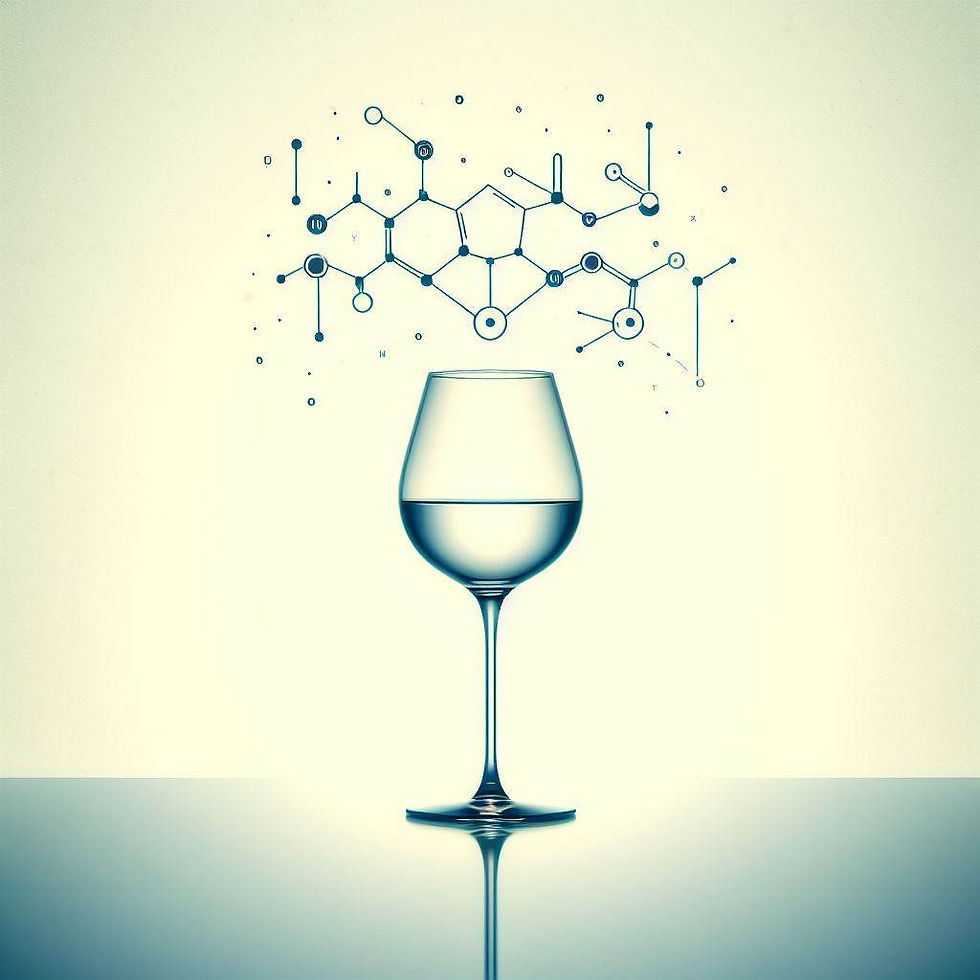
Hello, wine lovers! I'm Darina Serova, your resident wine expert, here to uncork some fascinating—and scientifically sound—insights about the trace amounts of tin and mercury in our beloved bottles of red. Now, I know what you're thinking: "Heavy metals in my wine? Should I be worried?" Let's dive in and explore this topic with the perfect balance of technical detail and approachable charm.
First and foremost, let’s understand why the presence of tin and mercury in wine is being studied in the first place. The study I'm referencing, conducted by V. Vacchina, E. N. Epova, S. Bérail, B. Médina, O. F. X. Donard, and F. Séby, meticulously analyzed 122 red wines from around the globe to measure their tin (Sn) and mercury (Hg) levels, focusing on their speciation—essentially the different chemical forms these metals can take.
The researchers found that the average concentrations of tin and mercury in these wines were 4.4 µg/L and 0.22 µg/L, respectively. To put that into perspective, these amounts are quite minuscule and fall within safe consumption limits set by various health authorities. But why bother with such tiny amounts, you ask? Because the devil—or in this case, the potential toxicity—is in the details of these chemical forms.
In the world of chemistry, speciation is the process of identifying and quantifying different chemical forms of an element within a sample. This is crucial because the toxicity of an element can vary dramatically based on its chemical form. For instance, methylmercury (MeHg+) is highly toxic, whereas inorganic mercury is less so. Similarly, organotin compounds (OTCs) can range from relatively harmless to quite toxic.
The innovative aspect of this study lies in the use of two sophisticated techniques: ICP-MS (Inductively Coupled Plasma Mass Spectrometry) and GC-ICP-MS (Gas Chromatography Inductively Coupled Plasma Mass Spectrometry). These methods allow scientists to pinpoint the exact types and quantities of tin and mercury compounds present in wine. For wine enthusiasts, this means we can enjoy our drink with an informed peace of mind.
Interestingly, the study revealed that methylation of tin—where tin combines with a methyl group to form compounds like dimethyltin (DMT)—occurs naturally during the winemaking process, rather than during bottling. This suggests that the geographic origin and specific winemaking practices could influence the levels of these compounds.
While methylmercury was not detected in any of the wine samples, various organotin compounds were present, predominantly in their methylated forms. Dimethyltin was the most common, followed by other compounds like monomethyltin and monobutyltin. The reassuring news is that the levels of these compounds were well below the safety limits set by regulatory bodies.
So, what does this mean for us wine aficionados? The study confirms that the trace amounts of tin and mercury in wine do not pose a significant health risk under normal consumption patterns. This is excellent news, as it allows us to continue enjoying our favorite reds without undue concern.
For those particularly interested in the nitty-gritty details, the researchers' focus on speciation rather than just total metal content provides a more nuanced understanding of potential toxicity. This approach is a leap forward in food safety science, ensuring that even the tiniest traces of contaminants are thoroughly evaluated.
Normal consumption of wine, considering these findings, is not a health hazard. That’s a relief, right? But it does highlight the importance of continuous monitoring and research. For wine producers, understanding these elements can lead to better practices that minimize potential contamination. For us consumers, it’s a reminder of the intricate dance between nature and science that fills our glass.
Stay Informed: Knowing what's in your wine can enhance your appreciation and ensure you're making safe choices.
Appreciate the Complexity: The journey from grape to glass involves numerous factors, including the soil and environment where the grapes are grown.
Trust but Verify: While the levels of tin and mercury found are generally safe, it’s always good to be aware of ongoing research and findings in the wine world.
Alors, while the presence of tin and mercury in wine might sound alarming, the thorough research by our dedicated scientists ensures that our favorite drink remains safe. So, go ahead and enjoy that glass of red, armed with a bit more knowledge about what’s inside.
Bibliography: Vacchina, V., Epova, E. N., Bérail, S., Médina, B., Donard, O. F. X., & Séby, F. (2020). Tin and mercury and their speciation (organotin compounds and methylmercury) in worldwide red wine samples determined by ICP-MS and GC-ICP-MS. Food Additives & Contaminants: Part B. DOI: 10.1080/19393210.2020.1734669.

Comments